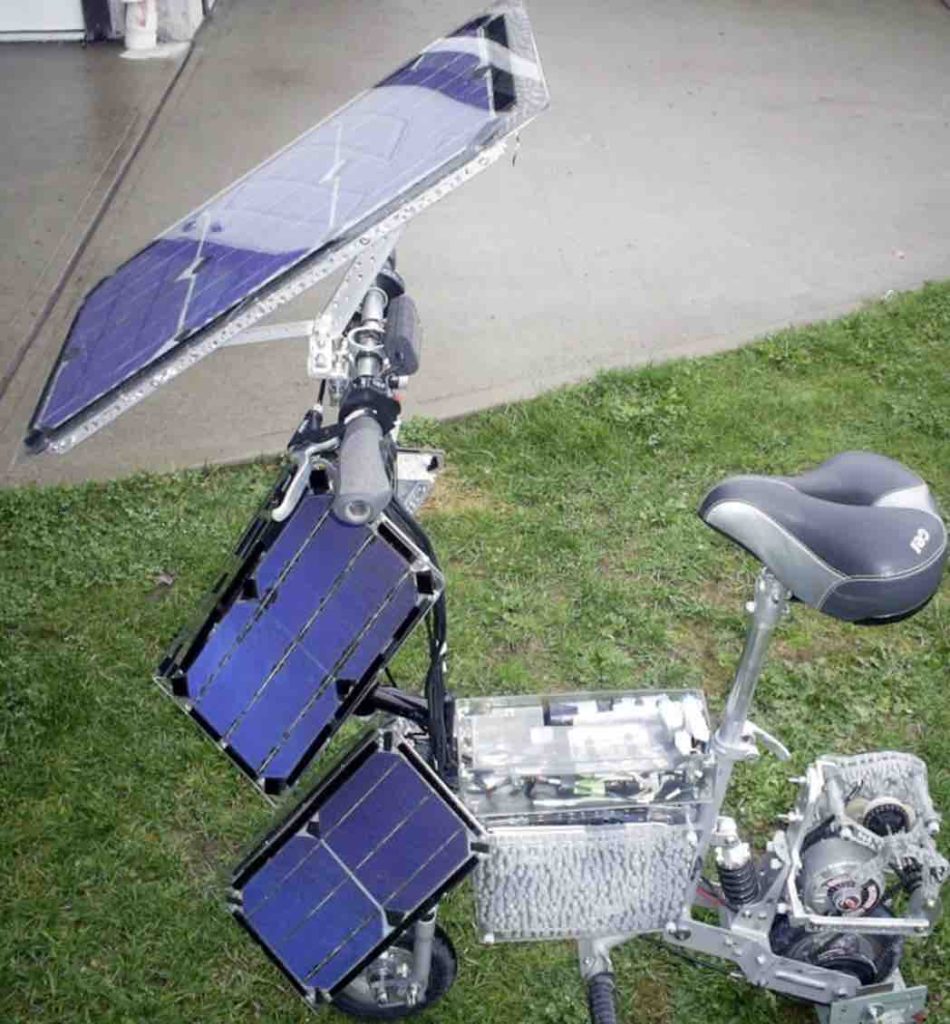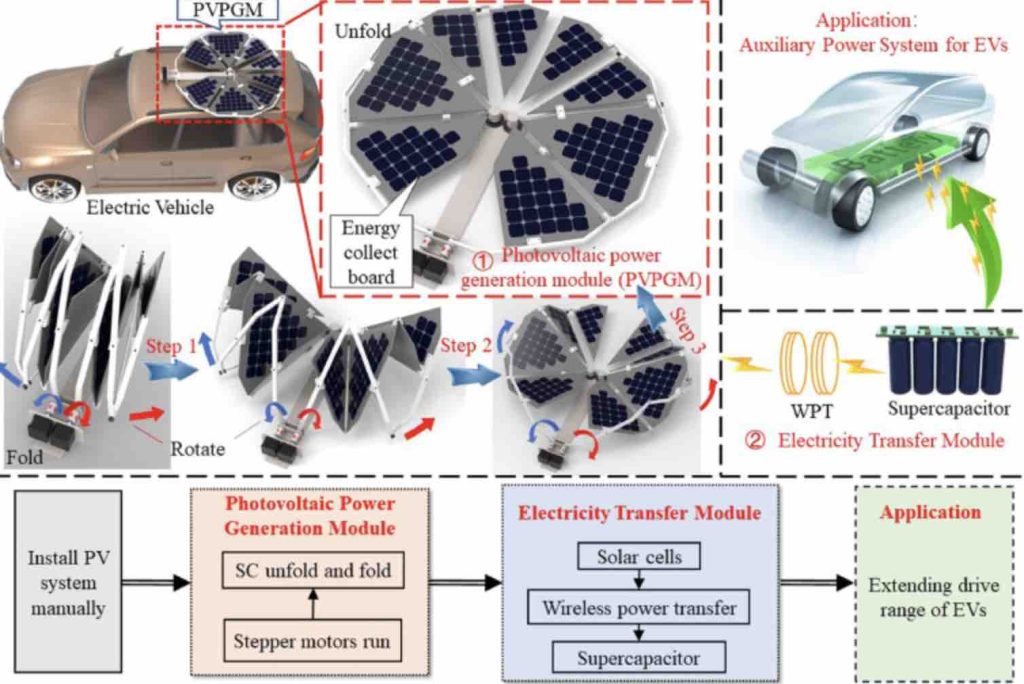Are you curious about the innovative world of photovoltaic hybrid vehicle systems? Look no further! In this article, we’ll delve into this advanced technology and take a closer look at one of the most impressive examples – The Hybrid Electric Kinetic Photovoltaic Vehicle(THEKPV).

THEKPV is an eco-friendly hybrid vehicle that utilizes renewable energy sources to power its electric motor and reduces greenhouse gas emissions. By combining solar and kinetic energy sources, this remarkable automobile provides a clean and emissions-free mode of transport. Also, please take a look at my solar cross e-bike and all about electric bikes post too.
Are you an auto enthusiast or just someone interested in green energy and sustainable transportation options? Look no further! In this article, we’ll examine the advantages of photovoltaic hybrid systems as well as explore some exciting features of THEKPV is here to share with you. – let’s get started!
Read also: 10 Things You Should Consider Before Purchasing An Electric Bike
So, what is a Photovoltaic Hybrid System?
Photovoltaic Hybrid Systems are innovative combinations of solar and kinetic energy sources to power vehicles.
A hybrid photovoltaic system can convert alternating current and solar radiation into direct current to help accelerate your car on demand, and here is where THEKPV comes into play.
The Hybrid Electric Vehicle Kinetic Photovoltaic (THEKPV) is an innovative concept vehicle powered by this system. Equipped with a complex electrical circuit, this vehicle provides two options for charging its LiFePO4 battery.
It can be connected to mains power via a 350-watt onboard charger or utilize its solar panel system for free, renewable energy production.

Why Is Kinetic Photovoltaic Technology Essential in Hybrid Electric Vehicles?
In 2008, the team behind the Hybrid Electric Vehicle Kinetic Photovoltaic began developing an electrical circuit and mechanical system capable of collecting, storing, and harvesting energy.
Their vision was to construct a prototype electro-solar hybrid vehicle using renewable energies that would reduce greenhouse gas emissions while having a small enough footprint to easily pack away in a suitcase for transportation.
This revolutionary technology promises zero emissions, helping reduce carbon footprint while being powered by renewable energy sources.
The Hybrid Electric Vehicle Kinetic Photovoltaic offers an exciting glimpse into the future of electric vehicle technology and could pave the way for more sustainable transportation options.
Performance of Hybrid Vehicle Photovoltaic Systems
This Hybrid Electric Vehicle Kinetic Photovoltaic boasts a battery of 396 Wh (24v main), offering an impressive 13 km range at a minimum.
Recharging time for this model takes 15-45 minutes with AC and 28 Wh booster battery (12V). Furthermore, with its booster capacitor of 10.8V, you can generate 50 watts of solar energy and use its 12V Kinetic generator simultaneously.
Kinetic energy after conversion to DC is stored in a small bank of ultracapacitors for use by the driver as a Power Boost Accelerator.
This vehicle captures motion through an additional pinion mounted opposite to the electric motor on the rear wheel. Five gears rotate several very small three-phase generators with multipole configuration in order to reduce cogging torque.

Current Alternative Options in the Market
Although the Hybrid Electric Vehicle Kinetic Photovoltaic is an innovative concept, customers have other available choices on the market to choose from.
Electric cars such as Tesla and Nissan Leaf use batteries as their main power source but can also be charged through solar panels. Furthermore, hybrid electric vehicles like Toyota Prius use both electric and gas power in order to run efficiently.
The Hybrid Electric Vehicle Kinetic Photovoltaic provides an innovative look into the future of transportation technology with its blend of renewable energy sources.
As more companies invest in sustainable initiatives, we may see more eco-friendly and innovative vehicles on our roads soon enough.
Photovoltaic hybrid systems in vehicles are becoming increasingly popular due to their capacity for harnessing multiple renewable energies to power the car.
This system utilizes an intricate electrical circuit that converts alternating current and solar radiation electricity into direct current for faster acceleration.
The Hybrid Electric Vehicle Kinetic Photovoltaics, better known as THEKPV, is an inspiring example of photovoltaic hybrid systems in action.
Conceived by Terry Hope in 2008, THEKPV is a personal micro-mobility solution that utilizes alternative energies for an electro-solar hybrid power source.
One of the primary advantages of photovoltaic hybrid systems in vehicles is that they reduce greenhouse gas emissions and carbon footprint by charging off the grid. Furthermore, an onboard solar system provides electricity from 100% renewable resources, making this an environmentally friendly and emissions-free option.
THEKPV utilizes a kinetic generator to store energy in a bank of ultracapacitors for use by the driver as a Power Boost Accelerator. Motion is captured by an additional pinion mounted opposite to the electric motor on the opposite side, which rotates multiple three-phase generators with multipole configuration to reduce cogging torque. Each generator converts alternating current into direct electricity at 74% efficiency.
THEKPV’s photovoltaic system consists of two groups of Ultra High Power Monocrystalline solar cells. The first group serves as aerodynamic body panels to reduce drag coefficient, while the second provides full grid charging when needed. This solar array can supply alternative energy directly to the motor, used for onboard electronics as well as with an additional battery pack and accelerator on board.
THEKPV boasts a 350-watt motor, an A123 battery that’s completely free from emissions, and an ultralight and compact design made up of steel frames and polycarbonate Lexan bodies.
It also includes rear shock suspension, voltage/current monitoring, and titanium hardware for extra strength.
With technology progressing rapidly in the future, photovoltaic hybrid systems are expected to become even more advanced with features like solar battery charging, front suspension, GPS location, WiFi hotspot, Bluetooth audio streaming, gyro stabilizers for 12″ wheels, robotics capabilities – just to name a few!
As vehicles adopt more efficient and cost-effective hybrid power sources, we expect these systems to become even more prevalent.
Conclusion
Photovoltaic hybrid systems are an important advancement in vehicle technology, offering a green and emission-free alternative to traditional vehicles. THEKPV is one example of this successful implementation, and we can expect even more advanced systems in the future. With consumers increasingly demanding sustainable solutions, photovoltaic hybrid systems may become even more popular as an eco-friendly and cost-effective choice.
Related Article:
- How to Test a Fuel Pressure Regulator Without a Gauge
- How to unstick a fuel pressure regulator
- Exploring the Limits of 2019 Mustang GT Top Speed Analysis
- Difference Between Single Speed And Fixed Gear for a bike?
- What Happens When You Unplug Fuel Pressure Regulator
- 3 Best 36v Lithium Battery for Electric Bikes
